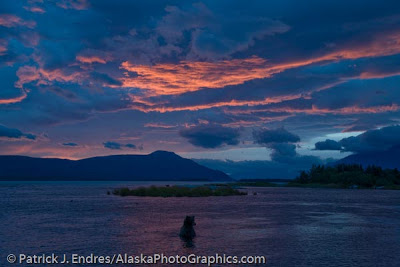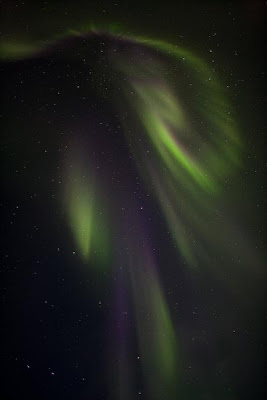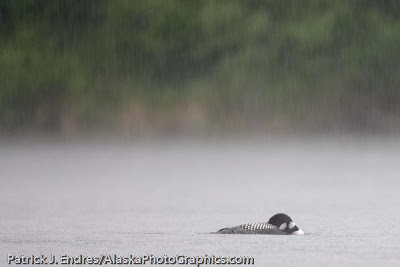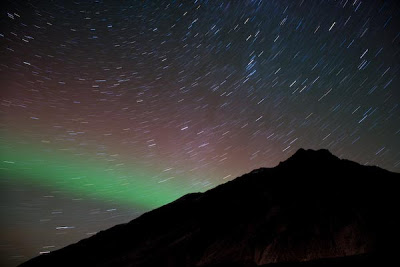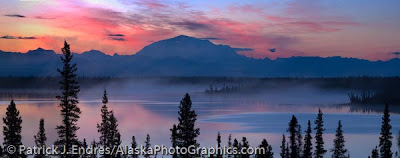Pictures of the landscape genre
September in Alaska is one of my favorite times of the year for photography. This is so because the sunrise and sunset events comes back into a little more harmonious schedule. Any nature photographer is linked to these two events (save the night sky photographer), since the quality and angle of light is most conducive…
This image illustrates one main advantage of fast wide angle lenses–they offer shorter shutter speeds. Shorter exposure times mean more detail. A five second shutter speed in this case captures more distinctive shapes commonly found during the coronal display. These shapes tend to get all blurred together with long exposures. To achieve this however, you…
The natural elements contribute an edge both to a photograph and the experience of its capture. I photographed this Common loon for about 20 minutes before the rain began, and during this time, it drifted near me on the shore for an almost full frame view. Unfortunately, by the time the rain fell, the bird…
The Brooks mountain range, which crosses Alaska’s arctic region, is the farthest north mountain range in the United States. Just north of Atigun Pass–the highest road pass in the state– is Atigun canyon, the location where this photo was taken. The northern lights were not that bright to the naked eye, but timed exposures are…
Photographing in Alaska’s summers introduces a problem for sleep-lovers. The quality of light that delivers color, warmth, and pleasing shadows happens when most are sleeping. The late hour of both the setting and rising sun blows any sort of normal working schedule. Some time ago I adopted a little guideline when in the field photographing:…

